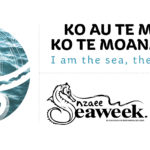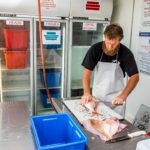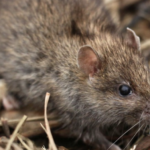Previous State of our Gulf reports called for bold, sustained and innovative steps to improve management and halt progressive environmental degradation.
A new report has been published. What has it found?
Cumulative pressure on the sea is mounting as human population and commercial pressures increase.
A quarter of a million people have moved into Auckland alone over the past decade and pressure is not restricted to the terrestrial environment, with demand for marine space and infrastructure creating “ocean sprawl”.
Treaty of Waitangi settlement negotiations have contributed to a reset of expectations and opportunities for mana whenua involvement in management of resources.
Management frameworks have evolved –the Auckland Unitary Plan, National Policy Statements on Freshwater Management and Urban Development Capacity, the Snapper Management Plan and a review of fisheries management – while recommendations from New Zealand’s first marine spatial plan have been released.
A review of eleven key environmental indicators show:
- Fishing continues to have a significant impact on the marine ecosystem. Some important stocks like snapper are overfished, crayfish are at their lowest levels in 40 years, a large newly discovered scallop bed has collapsed and bycatch of seabirds remains a concern.
- Heavy metal concentrations, sedimentation rates and nitrogen concentrations increasing in some places and having ecosystem impacts.
- Regular microbial contamination at bathing beaches that can compromise human health.
- New foreign marine species arrivals with the potential to become pests.
- Increasing biodiversity values on 47 islands that are now free of predators across the Gulf.
- An improved outlook for resident Bryde’s whales.
- Continued concern about the long-term survival of seabirds, particularly the fairy tern, New Zealand storm petrel, black petrel and flesh-footed shearwater.
- The ubiquitous presence of plastic pollution around the Gulf.
The report looks at progress towards integrated management – a key purpose of the Hauraki Gulf Marine Park Act – and finds that the pace of change is outstripping the ability of current management frameworks to respond effectively.
It finds progress hampered because of the technical complexity of issues, particularly legacy ones; the overriding incentive to develop and utilise resources; the high cost of resolving issues and financial constraints of regulators; conflicts between legislative frameworks and institutional inertia.
The report notes that development of an integrated and accepted plan has proved elusive but recommendations from the Sea Change – Tai Timu Tai Pari process offer a way forward, beyond business as usual.
A foreword says that the five state of the environment reports now published by the Hauraki Forum provide robust conclusions about the state of the Gulf and warrant prescriptive programmes of action.
Chair John Tregidga and Deputy Chair Liane Ngamane set out 10 strategic issues needing political attention and address them to Minister of Conservation Eugenie Sage.
They invite fundamental change in fisheries management, progress in creating new protected areas, recognition of significant achievements in wildlife and habitat protection, greater involvement of ministers with Maori portfolios, implementation of the recommendations of the Sea Change – Tai Timu Tai Pari process, greater engagement of the Crown in the Forum’s governance responsibilities, consideration of new financial mechanisms, and of opportunities associated with the next Americas Cup regatta.
A powerful mihi at the beginning of the report serves as a reminder of the spirit and aspirations for the Hauraki Gulf Marine Park legislation when it was created in 2000:
Ka titiro whakawaho atu ki ngā ika pipiha nui o te moana, ā, ka arahina tonutia e ngā māhina ngā tātai whetū me ngā manu karoro inutai. Ko te iho o ēnei wai e tuku atu ana i tōna ia ki ngā puna wai tapu ki ngā kōngutuawa. Ahakoa tai timu, tai pari ko tēnei te rangi ka ū kia mau – hui tāiki e!
Awe-inspired, I look upon the wonders of the waters guided by the moon, the stars and the birds of the sea. The heart of these waters run to the sacred springs. Low tides, high tides to this day we shall protect and guard.
The Herald covered the report release here. As did TVNZ and Newshub.








